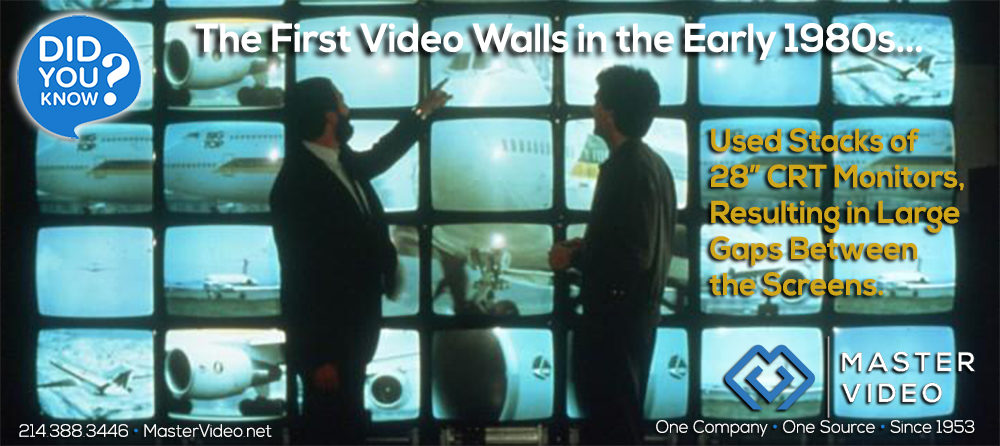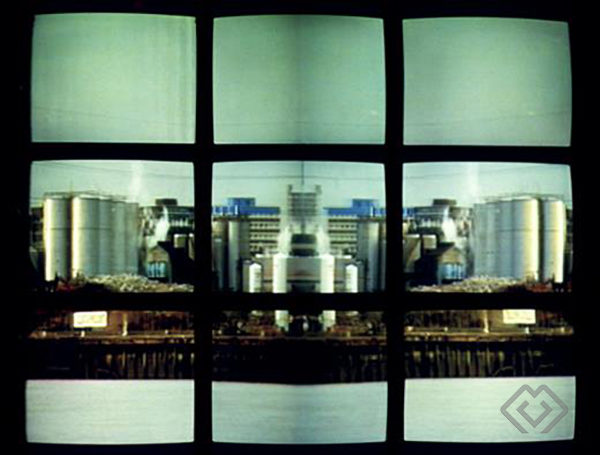• DYK - The first Video Walls emerged in the early 1980s when standard 28” CRT (Cathode Ray Tube) monitors were stacked together, resulting in large gaps between screens.
Why Video Walls?
Did You Know; The story of the first Video Walls in the early 1980s begins when large 28-inch CRT screens were stacked and cubed together to make a “Video Wall.” It was such a revolutionary concept, that the large bezel gaps between the screens were hardly even noticed back then.
Today, technology has come a long way in size, shape, and resolution. Video Wall Systems are an integrated solution consisting of multiple components; An array of high-resolution displays driven by a powerful processing system and software. Together, the video wall behaves like a single display that can deliver performance, flexibility, and interactivity that simply is not possible with more basic display solutions.
Types of Video Walls
Video walls come in a large range of display technologies, including LCD, LED, blended projection, projection cubes, and more. Each display type offers unique advantages in terms of resolution, brightness, reliability, cost, and other factors.
Why Video Walls?
• Larger display area; improve audience draw and retention.
• Higher aggregate resolution; deliver more detailed content.
• Distributed displays; deliver content to multiple locations.
• Multiple content sources; deliver multiple simultaneous messages.
Master Video offers best-in-class Video Walls, with a wide-range of premium features and customization options to meet unique demands in any environment. Video Wall Systems are extremely versatile and can provide benefits for virtually any application and environment. Video Walls deliver outstanding visual performance, flexibility, and reliability for any business in every market.
Superior Visual Performance
• Higher Resolutions - Video walls are also much more scalable than projectors, since the display surface can be expanded without sacrificing image quality.
• Powerful Processing - Superior processing abilities enable video walls to deliver fluid visual performance and display large amounts of high-resolution content.
• Superior Brightness - These displays maintain consistent brightness regardless of their size, while front-projected images become dimmer and blurrier when they are enlarged.
Flexible Interactive Presentations
• Display Virtually Any Content - A video wall processor can capture signals in different resolutions and formats from a wide range of devices, like cameras, computers, cable boxes, and more.
• Dynamic Content Placement - The video controller enables individual display “tile” displays to work together as a single canvas, from a single display, stretched across multiple displays, or dragged across the display surface.
• Content Manipulation Features - A video wall software processor is a feature-rich interface, providing a range of tools for managing and manipulating content on the displays that can be arranged, scaled, zoomed, cropped, and layered.
Superior Reliability and Versatility
• Reliable & Resilient - Video Wall systems are built from professional-grade components, many specifically designed for 24/7, mission-critical environments, providing Video Wall reliability and resilience.
• Minimal Maintenance - Most Video Walls have no consumable parts and require virtually no maintenance over years of operation, making them a more affordable long-term solution.
• Flexible Size & Shape - Video walls provide unique versatility, and can be wall-mounted, free-standing, curved, non-rectangular, three-dimensional, and can be small enough to be portable or scaled to massive dimensions.






